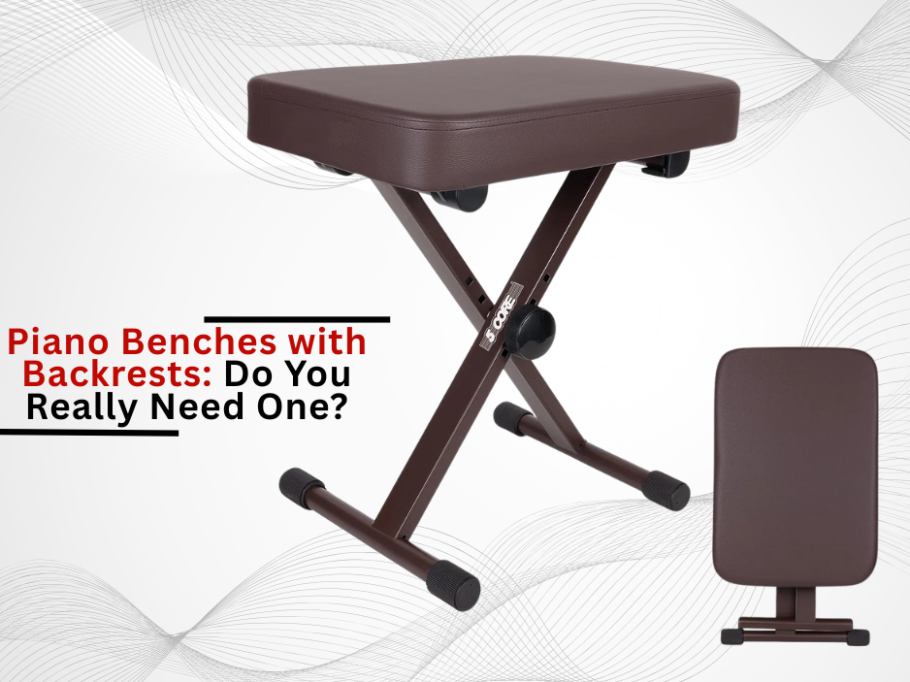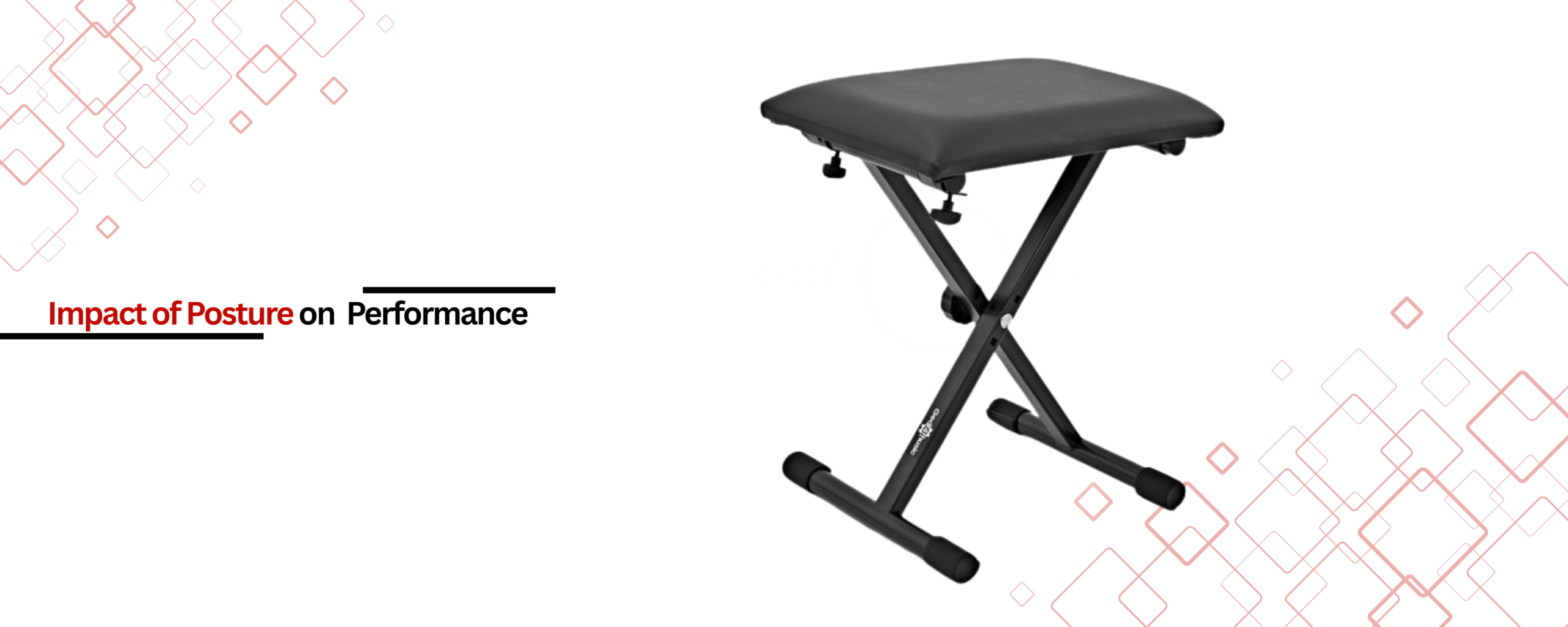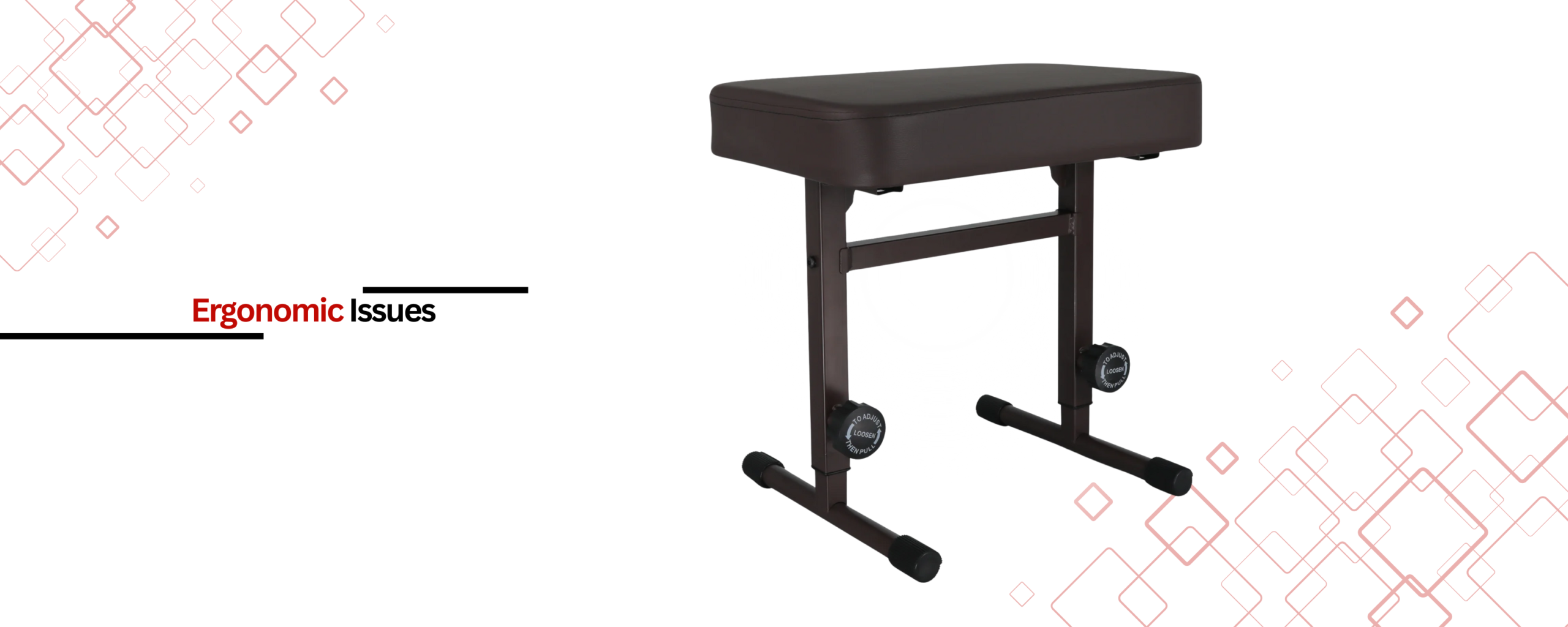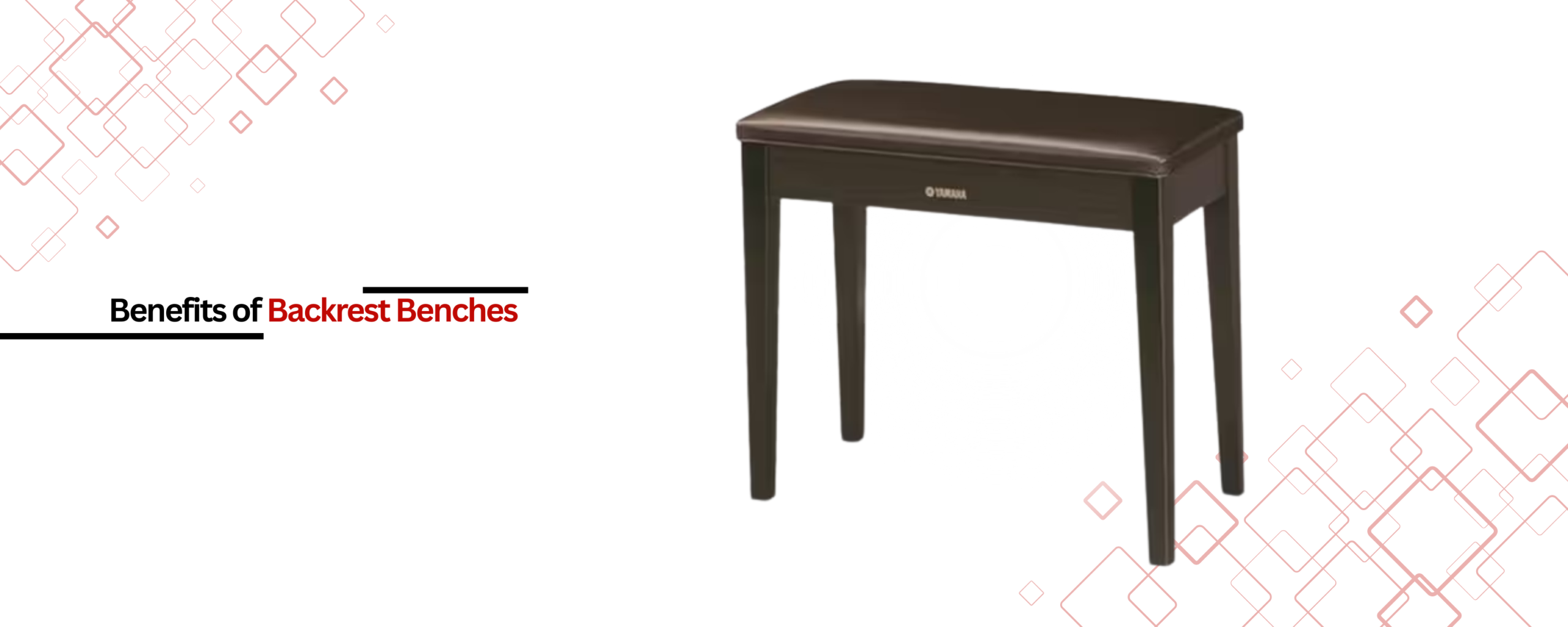The piano bench has always been a part of music practice, and its design features, such as backrests, continue to be debated. Some claim that a backrest affects his or her traditional piano posture, while modern ergonomic studies suggest a backrest may reduce strain during long sessions of playing the piano. This article examines the advantages and disadvantages of backrest benches with the aim of helping pianists make well-informed decisions.
To know more, read Which Piano Bench is Best for Your Keyboard Setup?
How Does Posture Impact Piano Performance?
Good posture is important for your health, as well as accuracy in musical performance. Relaxed shoulders, a neutral spine, and even weight distribution all enable unobstructed transition across the piano keys. The challenge, however, is that perfect posture becomes harder and harder to achieve the longer one plays the piano, leading to discomfort.
Pros of Piano Benches Fitted with Backrests:
Support for the lower back during a prolonged performance:
People who suffer from bone issues in their back understand the tremendous value lower back pain relief can provide. It is especially helpful to pianists who perform for hours because a backrest offers soft support to the lower back, helping to maintain muscle activity and alignment.
Helps Prevent Tension in the Shoulders:
Due to increased concentration, there is an unfortunate tendency for the shoulders to pull forward, exacerbating tension. By preventing shoulders from hunching forward, backrests allow more freedom for the chest, which aids in breath control and comfort.
Effectiveness for Multitasking:
Backrests provide pianists with the opportunity to lean back for short periods while teaching, adjusting pedals, or looking at the score. This makes it easier to rest without actually getting up from the bench.
Cons of Piano Benches with Backrests:
Reduced Mobility:
Incorporation of backrests limits torso twisting and arm extension to some degree, which may restrict playing style or techniques that are body intensive.
Straying from Classical Instruction:
Most instructors still tend to recommend a forward slanting position, which is active and enables easy engagement with the piano. A backrest will inevitably contradict this instruction, which is bound to hurt technique.
Design and Artistic Limitations:
Large backrests are less efficient in terms of space usage and do not fit in with minimalist design. While this might seem irrelevant, it matters greatly for home studios, or even small apartments.
Need this in bulk? You can get this from wholesale – piano benches
If you need this at the best prices, you might check out this new platform – piano benches
Ergonomic Issues
Adjustment is Optimal:
Height-adjustable backrests aligned to the pianist’s lower, natural back curve are perfect. Set backrests, poorly positioned or fixed, will only result in aggravated pain.
Padding and Armor:
Uneven distribution of weight leads to overheating, which is prevented by breathable material. Firm cushioning can easily be attained through supportive designs, but is not restricted.
Hybrid Modes:
Others offer some form of back to be removed for ease when a relaxed seated position is preferred rather than controlled and supported sitting.
Who Benefits Most from Backrests?
Chronic Pain Pianists:
Those suffering from back pain, scoliosis, or sciatica may receive relief from a backrest’s structured support.
Educators and Students:
Teachers spending hours demonstrating techniques and students revising scores are likely to appreciate the opportunity to recline for a bit.
Hobby Players:
Amateurs have a different approach toward playing. Technical rigors take a backseat and comfort becomes primary.
Backrest Alternatives
Ergonomically designed aids support the back without the use of a backrest for more cautious pianists.
- Lumbar Cushions: These easily portable cushions are designed to attach to standard benches for effective lower back support.
- Adjustable Benches: Tilted seats or split designs allow slight changes in posture without the use of backrests.
- Yoga Ball Seating: Yoga props support active core engagement but can be challenging for precision playing.
Conclusion
Consideration of the use of a backrest is entirely personal, focusing on one’s physical, playing demands, and style. 5 Core, Roland, and Gleam are examples of brands illustrating the market’s rich diversity, catering to traditionalists and innovators alike. Some pianists enjoy the convenience offered by backless benches, while others cannot perform without the comfort and endurance of a backrest. It’s always about the body, the instrument, and the artistic objectives. Every performance varies from painful to expressive, which amalgamates to result in achieving artistic goals smoothly.




